Classic Brazilian Salpicão for Summer Gatherings
41 min read Discover the bright, crunchy flavors of salpicão—Brazil’s beloved chicken salad—perfect for summer gatherings, with creamy dressing, crisp vegetables, and iconic shoestring potato topping. October 08, 2025 12:07
On a humid summer evening in São Paulo, when the jacaranda blooms still cling purple to the sidewalks and the air feels like warm velvet, a platter of salpicão can hush a chattering crowd. Even before a fork touches it, you can smell the citrus—lime and orange—from across the terrace, hear the quick crunch of batata palha being scattered over the top like golden confetti, and watch the cream-sheened ribbons of carrot and chicken gleam in the last light. Salpicão is that unapologetically festive dish: cool against the heat, creamy yet bright, a chorus of textures that invites you to take just one more spoonful and another after that. It is the taste of backyard birthdays, of Christmas lunch under a whirring ceiling fan, of New Year’s Eve buffets where sequined dresses and flip-flops meet. It is deeply, joyously, Brazilian.
What Is Salpicão, Really?

Salpicão is Brazil’s beloved chilled chicken salad, a vibrant toss of shredded or diced chicken with crisp vegetables (think bell peppers and celery), sweet pops of fruit (green apple is classic; raisins or pineapple appear in many regions), salty accents (ham, olives), and a creamy dressing usually built on mayonnaise brightened with lime or orange. That all gets topped, at the last minute, with batata palha—those thin, crunchy shoestring potatoes that melt into shatters when your teeth meet them.
The word itself, salpicão, comes from the idea of sprinkling or speckling—an apt description of how the final toss looks: confetti colors of carrot, pepper, and glazed fruit flecked across silky chicken. It is, at once, a pantry-clearing solution and a party centerpiece. It’s most often seen at Christmas (Natal), Réveillon (New Year’s), and weekend gatherings where a table might also hold a chilled farofa de manteiga, a bowl of vinagrete (tomato-onion vinaigrette), wedges of pão de queijo, and a sweating bottle of Guaraná.
From the north to the south of Brazil, you’ll encounter versions that tell local stories: Bahia’s tropical exuberance with mango and cilantro, Minas Gerais with its love of tender pulled chicken and pickled peppers, Rio Grande do Sul with smoked turkey leftovers sliced into the mixed salad after a churrasco. Salpicão is a culinary passport stamped with many hometowns.
A Brief History, and Why It Belongs at Summer Parties

The dish evolved as a Brazilian answer to European-style cold salads and Portuguese-influenced preparations that feature creamy binders and preserved elements. Portuguese cooks brought a tradition of using citrus and olives with poultry, and the technique of shredding leftover roast meats was standard in many home kitchens. But the exuberant fruit and the habit of crowning with batata palha are proudly Brazilian gestures—the kind of textural maximalism that makes each bite surprising.
In my grandmother’s kitchen in Belo Horizonte, salpicão made its appearance when the dining room doors swung open at midday on Christmas Eve, the windows cracked to tease a breeze into the room. A tall glass bowl would arrive from the fridge beaded with condensation, the salad under a napkin to hide the crunch topper until guests actually sat down. That bit of theater is essential. There’s nothing sadder than soggy batata palha, and any auntie in Minas will slap your hand away if you try to add it early. In our family, the men carried heavy platters of pernil and farofa; the kids were assigned to crush bottles of Guaraná Antarctica with their palms to make sure they were very cold; and my aunt Dora, a nurse with a deft touch and surgeon’s patience, shredded the chicken so fine it practically braided itself.
Summer celebrations in Brazil call for a dish that balances richness with freshness. Salpicão does that with the brightness of citrus, the snap of pepper, and the sugar-salt interplay of fruit and olives. It’s quick to assemble in a hot kitchen, travels well, and seems to become even more flavorful after a few hours resting in the fridge—until the final flourish.
Ingredient Deep-Dive: Building a Balanced Bite

For salpicão to sing, every component matters. Here’s how I think about each layer and what it contributes.
- Chicken: The backbone. Poached breasts yield clean, tender shreds that absorb dressing like a sponge. Rotisserie chicken brings smoky depth and convenience. Smoked turkey breast is common around the holidays and gives a charcuterie-like savor.
- Vegetables: Color and crunch. Red and yellow bell peppers add sweetness and perfume; celery adds grassy snap; red onion provides bite that softens as it marinates; carrots bring sun-bright color and a firm chew.
- Fruit: Sweet lift and juiciness. Green apple is classic (Granny Smith for tartness, or Gala for sweeter notes). Some families add pineapple cubes (fresh, minimally ripe) or even mango in Bahia, cut into small dice to avoid overwhelming the dish.
- Salty accents: A contrast lane. Green olives (pitted, chopped) add brine; bits of lightly smoked ham or turkey punctuate with umami; capers are an elegant twist if you like.
- Herbs: Aromatics for the finish. Parsley for freshness, cilantro for a coastal flair, chives for gentle onion perfume. Dill is unorthodox but delicious with poultry and apple.
- Dressing: The emulsified heart. Mayonnaise forms the base; crème de leite (unsweetened table cream) or Greek yogurt loosens and lightens without losing body. A squeeze of lime, a trickle of orange juice, Dijon mustard, and a little honey or sugar to balance. Salt to draw moisture and fuse flavors, fresh black pepper to wake it up.
- Texture crowning: Batata palha. Paper-thin, fried shoestring potatoes. They must be very crisp and added right before serving so their shatter contrasts with the creaminess below.
Beyond the list, salt management and liquid balance are your quality controls. The dressing should be spoonable, not runny; the vegetables should be dry before mixing; fruits like pineapple should be briefly drained on paper towels if they’re too juicy. A soggy salpicão feels heavy and dull, while a properly managed one has a buoyant, almost mousselike texture under the crunch cap.
How-To: Classic Salpicão for a Crowd (12–16 servings)

This version borrows from my aunt Dora’s approach, with a few tweaks learned from cooks in São Paulo and Salvador. It’s designed for summer gatherings when you want a big bowl that can anchor a buffet or fill a party-size sandwich bar.
Prep time: 40 minutes active, plus cooling Total time: About 2 hours (including chilling) Yield: 12–16 servings
Ingredients
For the chicken:
- 1.5 kg (about 3.3 lb) boneless, skinless chicken breasts (or 1 whole rotisserie chicken, meat shredded)
- 1 small onion, halved
- 2 garlic cloves, gently smashed
- 1 bay leaf
- 1 teaspoon black peppercorns
- 2 teaspoons kosher salt
- Strips of lemon zest (from 1 lemon)
For the salad:
- 2 medium carrots, julienned or grated on the large holes
- 1 large red bell pepper, finely diced
- 1 yellow bell pepper, finely diced
- 3 celery stalks, finely sliced
- 1 small red onion, thinly sliced and rinsed
- 2 crisp green apples, cored and diced (no need to peel; toss with a little lime juice)
- 3/4 cup green olives, pitted and chopped
- 200 g (7 oz) smoked turkey or ham, cut into tiny cubes (optional)
- 1/2 cup raisins, golden or dark (optional, but traditional in many homes)
- 1/2 cup chopped parsley
- 2 tablespoons chopped chives
For the dressing:
- 1 cup good-quality mayonnaise
- 1/2 cup crème de leite or heavy cream (unsweetened; or use 1/2 cup Greek yogurt for tang)
- 2 tablespoons Dijon mustard
- 2 tablespoons fresh lime juice
- 1 tablespoon fresh orange juice (or more lime if you prefer)
- 1 teaspoon honey or sugar (adjust to taste)
- 1/2 teaspoon fine salt (plus more to taste)
- Freshly ground black pepper
For the topping:
- 300–400 g (10–14 oz) batata palha (store-bought or homemade)
- Extra parsley or chives to sprinkle
Method overview
- Cook and shred the chicken.
- Prepare and dry the vegetables and fruit.
- Whisk the dressing until silky.
- Fold everything together gently and chill.
- Crown with batata palha right before serving.
Step-by-Step With Sensory Cues

-
Poach the chicken to tenderness:
- Nestle breasts in a large pot with onion, garlic, bay, peppercorns, lemon zest, and salt. Cover with cold water by about 2–3 cm (1 inch). Bring just to a bare simmer over medium heat; you’ll see tiny bubbles slipping up the sides but no vigorous boil. Maintain 82–90°C (180–195°F) for 12–15 minutes, or until the thickest piece registers 73°C (165°F). Try not to rush—gentle heat keeps the meat silky.
- Off the heat, let the chicken rest in the hot broth for 10 minutes to finish cooking and relax. You’ll smell the onion-lemon steam when you lift the lid: clean, savory, a little floral.
- Transfer the chicken to a tray to cool until you can handle it. Shred by hand into long, fine strands—think picanha-fiber thin. The meat should be juicy and easy to pull apart, not dry or stringy. If using rotisserie chicken, pull light and dark meat apart and shred, discarding the skin for this style.
-
Prep the crunchy components:
- Julienne the carrots if you like ribbons that tangle, or grate for softer texture. Dice peppers into neat confetti—uniform pieces make every bite harmonious. Slice celery thinly on the bias for elegance. Rinse the sliced red onion under cool water and pat very dry; this takes the edge off its bite.
- Toss apple dice with a spoonful of lime juice to keep them lively green. If using pineapple, cut very small and briefly drain on a paper towel to avoid watering the dressing. Smell the apple-lime; it should feel like the first cool breath after opening the fridge.
-
Build the dressing:
- In a large bowl, whisk mayonnaise, crème de leite (or yogurt), Dijon, lime and orange juices, and honey until glossy and smooth. Season with salt and black pepper. The spoon should leave lazy ribbons in the dressing; it’s luscious but not heavy. Taste: it should be gently tangy, with mustard humming in the background and a citrus note lifting it.
-
Combine with care:
- Add shredded chicken and smoked turkey/ham (if using) to the bowl. Fold with a spatula so strands are coated but not crushed.
- Scatter in carrots, peppers, celery, onion, apples, olives, and raisins. Add parsley and chives. Fold again, turning the salad from bottom to top. It’s a pleasant resistance—vegetables brushing against chicken, everything satin-slicked.
- Taste and adjust. More salt? Extra squeeze of lime? If it feels heavy, a tablespoon or two of cold water or orange juice can thin the dressing without turning it watery.
-
Chill and finish:
- Cover and refrigerate at least 1 hour, up to 24 hours. Flavors settle and mingle—the onion calms, the chicken loosens its fibers.
- Right before serving, transfer to a wide, shallow platter. This shape gives maximum topping-to-salad ratio per spoonful. Crown generously with batata palha—you should hear the crisp whisper as it lands—then scatter more parsley. Serve immediately while the top is audibly crunchy.
Pro tip: Keep a little extra batata palha in a bowl at the table. Guests will refresh their own portions as they chat and linger.
Make-Ahead Strategy and Summer Food Safety

Brazilian summers can be merciless. To keep salpicão pristine:
- Poach ahead: Cook and shred chicken up to 2 days in advance. Store in the coldest part of the fridge in a sealed container with a splash of its cooking liquid to keep it supple.
- Dry matters: Spin or pat vegetables and herbs very dry. Excess water dilutes the dressing and accelerates spoilage.
- Dress at the right moment: You can mix the salad fully the morning of your event. If you want even more insurance against watery leftovers, fold in the apples and any extra-juicy fruits no more than 2 hours before serving.
- Keep it cold: Transport in a cooler with ice packs. On the buffet, nestle the serving bowl in a larger bowl filled with ice. Aim to keep the salad below 4°C (40°F). If it sits out at room temperature for more than 2 hours (1 hour if above 32°C/90°F), return it to the fridge.
- Separate the crunch: Batata palha belongs in its own sealed bag or container until the moment of service. Humidity is the enemy.
Variations: Smoky, Fruit-Forward, Bahian, and Beyond

- Smoky churrasco riff: Use leftover grilled chicken or smoked turkey. Add grilled corn kernels, a pinch of smoked paprika in the dressing, and replace some parsley with scallions. Serve alongside farofa with charred bits—true backyard flavor.
- Bahian brightness: Fold in small dice of ripe-but-firm mango and a touch of malagueta pepper for gentle heat. Use cilantro instead of parsley. A teaspoon of dendê oil is assertive; if you adore its perfume, add a few drops to the dressing for an unmistakable coastal accent.
- Minas comfort: Keep fruit minimal—just green apple. Add a spoon of requeijão cremoso (creamy Minas cheese spread) to the dressing for silk and a mild lactic sweetness. For a local pickle pop, toss in biquinho peppers.
- Natal holiday style: Raisins are non-negotiable in many houses, sometimes both golden and dark. Add slivered blanched almonds for festive crunch under the batata palha cap.
- Light-and-lean: Swap half the mayo for Greek yogurt, use more citrus, skip ham, and emphasize herbs. Your dressing will feel like an herbed cloud.
A Vegetarian and Vegan Path to Salpicão Soul

The architecture of salpicão—creamy, crunchy, sweet-salty, citrus-bright—translates beautifully without poultry.
- Plant proteins: Use shredded hearts of palm and jackfruit for a stringy “shred,” or opt for chickpeas lightly crushed so they catch the dressing. Firm tofu torn into irregular chunks and briefly marinated in lime, salt, and paprika takes on a pleasant chew.
- Dressing options: For vegetarian, use mayonnaise or yogurt as above. For vegan, whip 1 cup vegan mayo with 1/4 cup cashew cream (soaked cashews blended silky with water), 2 tablespoons lime juice, 1 teaspoon mustard, 1 teaspoon sugar, salt, and pepper. The cashew cream adds dairy-like plushness.
- Flavor lifts: Keep olives, apples, peppers, celery, carrots, raisins. Herbs remain essential. A bit of nutritional yeast is surprisingly good for umami.
- Finish the same way: Batata palha is typically vegan; check labels to avoid any additives if needed. Crown just before serving.
Serve this plant-based salpicão on toasted pão francês split and rubbed with a cut clove of garlic—a sandwich that’s equal parts cool and decadent.
The Secret of Batata Palha: Crafting and Sourcing
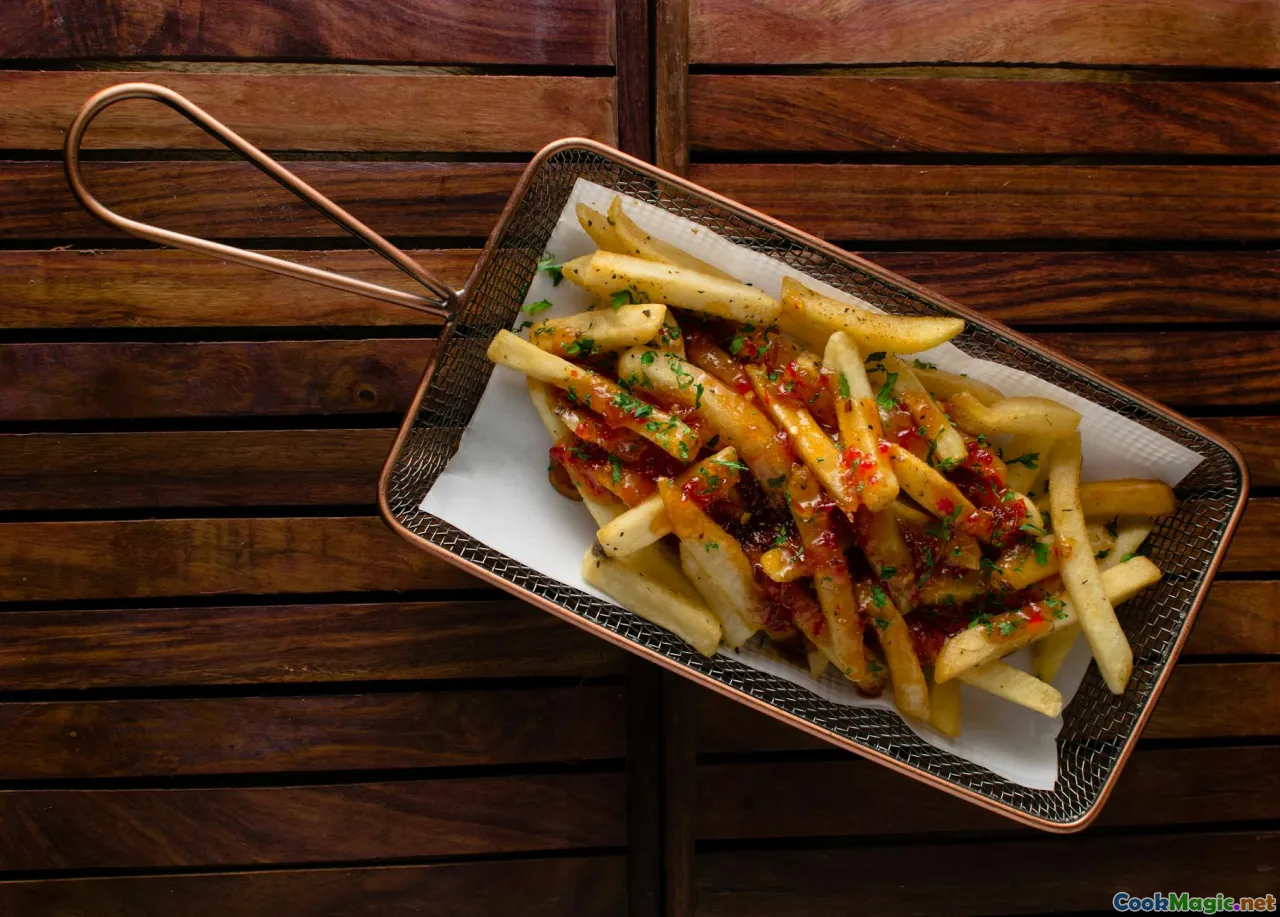
Batata palha is more than a garnish; it’s structural. The crunch sets the stage for every bite. While bags of it are widely available in Brazilian groceries, making it at home is rewarding.
- Choose the right potato: Waxy varieties will bend; you want starchy, like Russet or Asterix (Brazil’s go-to). Peel and cut into hair-thin matches using a mandoline with a fine julienne blade.
- Rinse and dry: Rinse the slivers under cold water until it runs clear; this removes excess surface starch that would make them gluey. Spin them dry or spread on towels until nearly moisture-free.
- Double-fry for shatter: Heat neutral oil to 160°C (320°F) and fry a small handful at a time, stirring to separate, until the edges look matte and just set, 1–2 minutes. Remove, drain, raise the oil to 185°C (365°F), and fry again until pale gold and crisp. You should hear a faint crackle when you shake the strainer.
- Season: Sprinkle with fine salt while still warm. For a subtle twist, dust with a whisper of sweet paprika or citric acid powder for tang.
- Storage: Cool completely and store airtight with a food-safe desiccant packet if you live in a humid climate. They stay crisp for days.
If sourcing, look for brands that list just potatoes, oil, and salt, and inspect the slivers through the bag—uniform, pale pieces tend to be crisper than dark, irregular ones.
Pairings: What to Drink and What to Serve Alongside
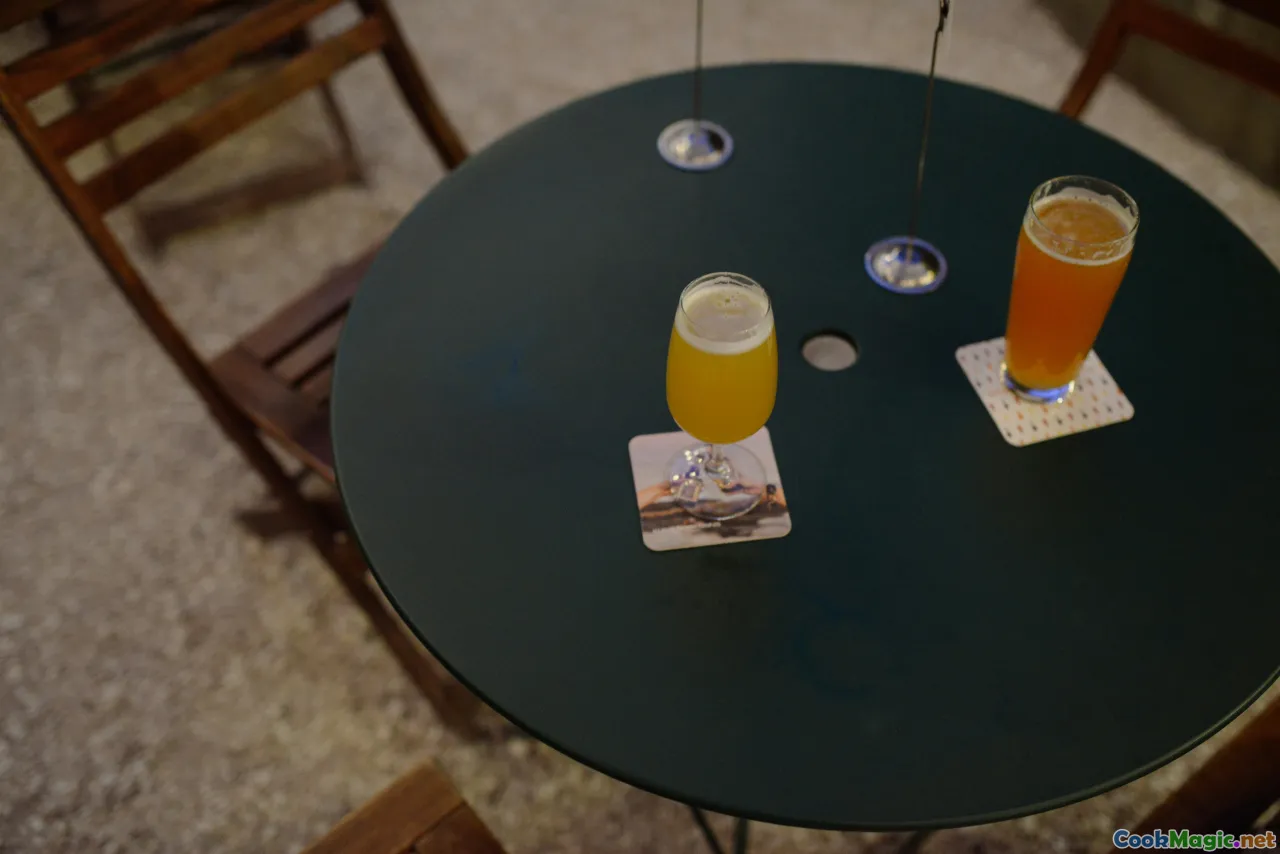
-
Drinks:
- Guaraná, ice-cold, the fizz scent like bubblegum and wild berries—quintessential.
- Caipirinhas made with lime and a grassy cachaça from Salinas, shaken hard so micro-ice keeps the drink bracing.
- Crisp lager (Brahma, Skol) or a lightly sour wheat beer to cut through creaminess.
- Dry Riesling or Vinho Verde with nerve and citrus. For nonalcoholic, limeade with a dash of bitters.
-
Breads and sides:
- Pão francês split into mini-sandwiches: the crunch of the crust against the cool salpicão is divine. A smear of requeijão inside the bread is a secret pro move.
- Pão de queijo warm from the oven, for a chewy-cheese foil.
- Farofa de cebola or farofa de manteiga for another texture lane.
- Simple green salad with hearts of palm and tomatoes dressed in olive oil and vinegar (vinagrete, light on onion).
- Chilled watermelon wedges and orange slices to cleanse the palate.
Presentation: Platters vs. Sandwich Bar
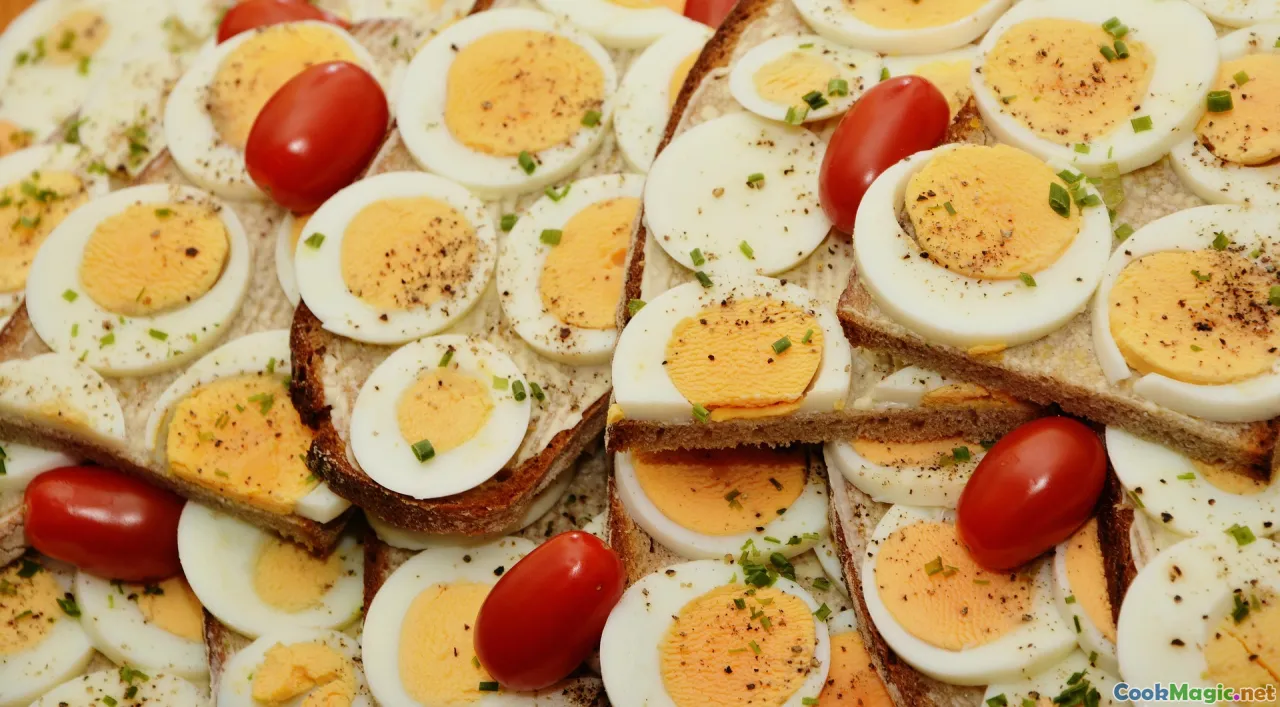
- The grand platter: Spread the salad in a wide, shallow dish and wreath with herbs and batata palha. Tuck in lime wedges and a few thin orange half-moons to echo the dressing. Place a dedicated spoon for the potatoes, so guests can refresh their serving as they eat.
- Build-your-own sandwich station: Lay out a tray of sliced pão francês, bowls of salad, batata palha, extra olives, pickled biquinho peppers, and crisp lettuce leaves. This is ideal for an afternoon pool party where people graze at their own pace. The tactile ritual of assembling the perfect, overstuffed sandwich is half the fun.
- Individual cups: For a standing cocktail event, spoon salpicão into small glass cups and sprinkle batata palha to order. Garnish with a frond of dill or a sliver of red pepper for color.
Think about color contrast and height. Salpicão looks most luscious when it’s mounded, not flattened. A few strategic herb sprigs make it look like a garden in miniature.
Global Cousins: How Salpicão Compares

- American chicken salad: Typically relies solely on mayonnaise and celery, sometimes grapes or nuts. Salpicão is brighter with citrus and more diverse in texture, especially with batata palha.
- Russian Olivier: Potatoes, peas, pickles, carrots, sometimes chicken, heavily mayo-bound. Salpicão skips the potato inside the salad (though crowns with it), uses fruit for lift, and features shredded texture over dice.
- Spanish/Mexican salpicón: Usually a shredded beef or fish salad with vinegar-forward dressing and raw vegetables. Brazil’s salpicão tilts creamy rather than vinegary, and uses poultry and mayo as its heart.
These comparisons spotlight what makes salpicão unique: it is an exuberant balance of sweet, salty, creamy, and crunchy, driven by tropical sensibilities and a love for textural play.
Troubleshooting and FAQs
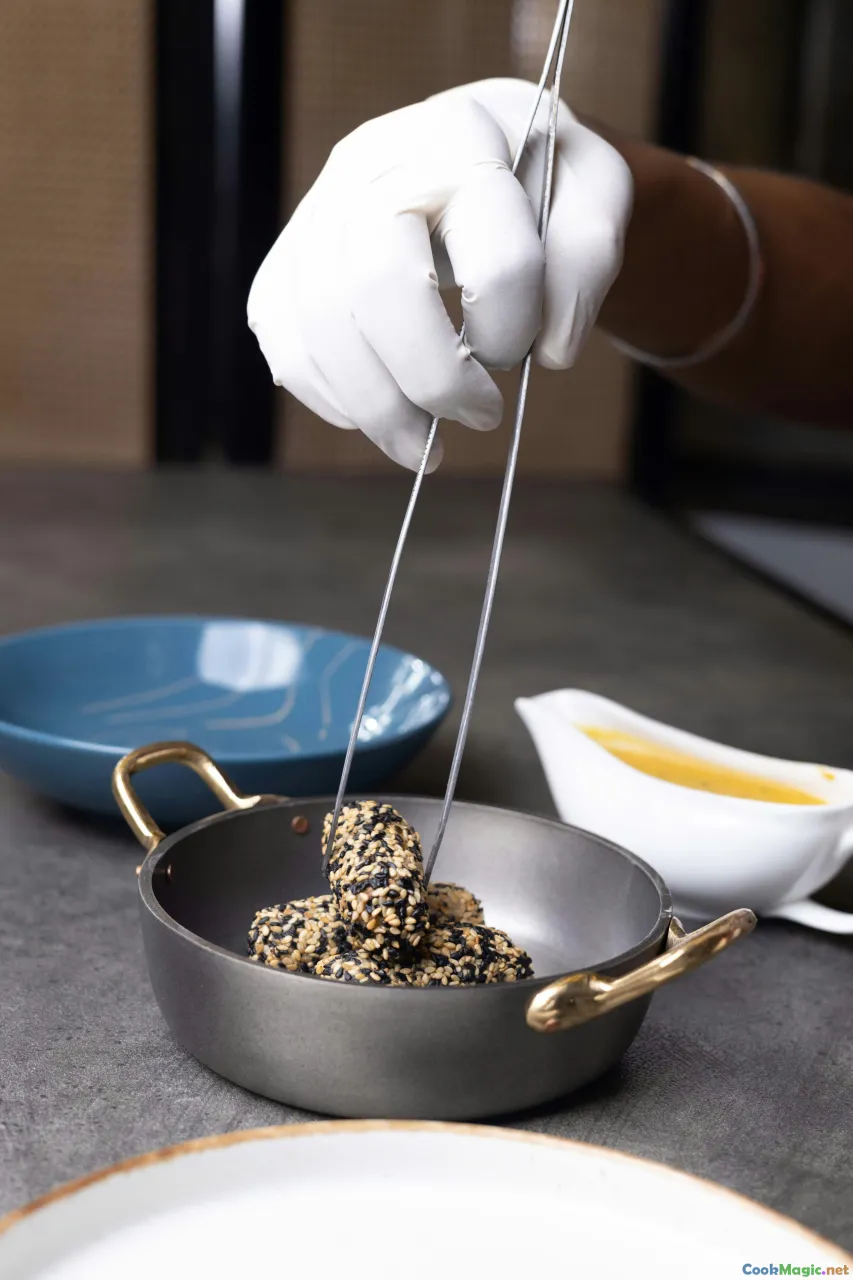
- My salpicão turned watery. Why? Likely wet vegetables or overly juicy fruit. Next time, dry produce thoroughly and salt the dressing lightly at first—salt draws water from veggies over time. You can also fold in a handful more shredded chicken or add a spoon of mayo to rescue the texture.
- The dressing tastes flat. Add a pinch more salt and an extra squeeze of lime. A half-teaspoon of mustard awakens the base; a tiny pinch of sugar can make the citrus blossom.
- The chicken is stringy and dry. Poach more gently, and don’t overcook. If using leftovers, fold them into the dressing while still slightly warm; they will absorb flavor and soften.
- Can I make it without mayo? Yes. Use 3/4 cup Greek yogurt and 1/4 cup olive oil whisked with mustard and citrus. The flavor will be tangier and lighter; some people add a spoon of cream cheese to smooth it out.
- How much batata palha is too much? There is no such thing—until it starts sliding off the mountain. A good rule is a 1:3 ratio by volume of potatoes to salad on the platter, plus extra at the table.
A Belo Horizonte Memory: The Day I Learned the “Sprinkle” Matters
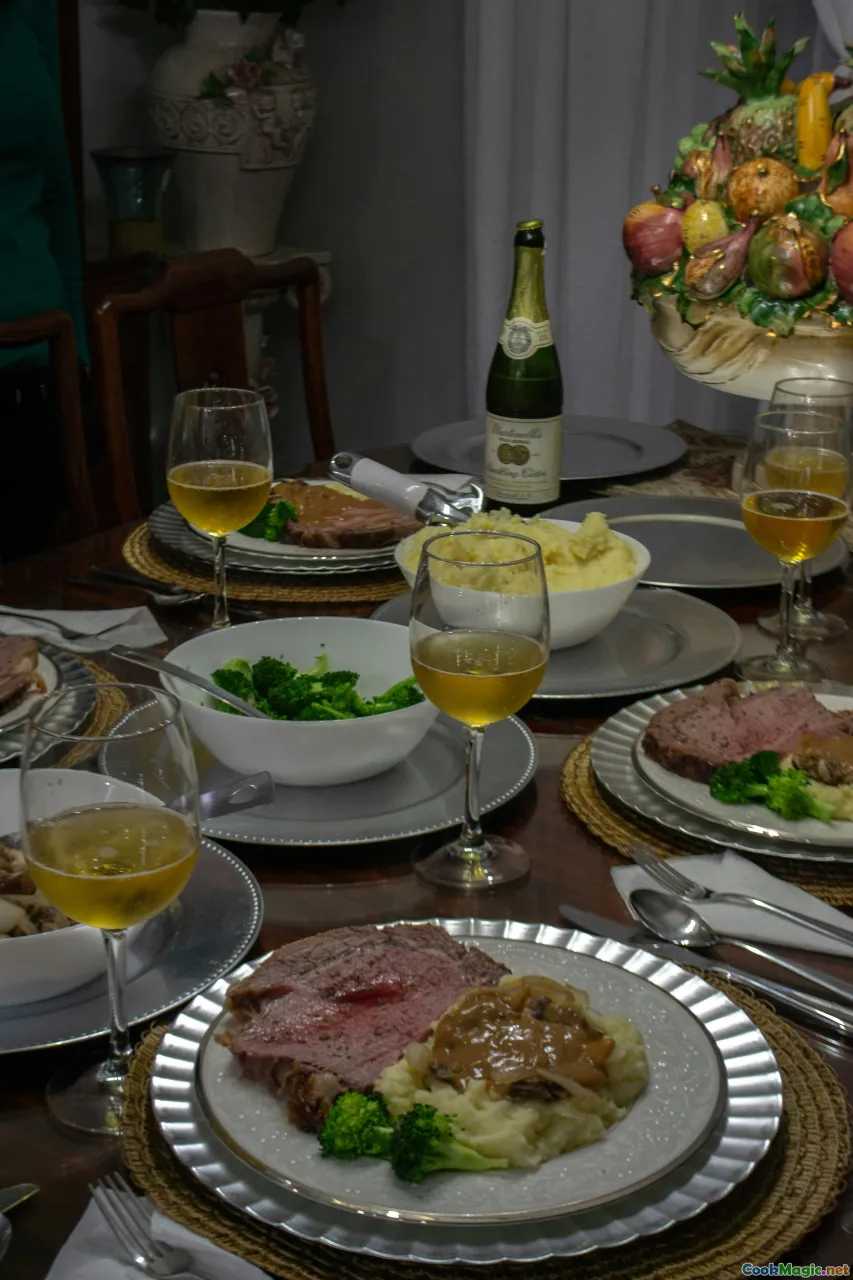
We were twelve at the table and two on the counter—for some reason my cousins and I preferred eating perched where we could kick our heels. It was a December afternoon, the house vibrating with forró from a neighbor’s radio and the smell of garlic heating in oil for farofa. In the kitchen, my aunt Dora handed me a bowl of glistening white—mayonnaise loosened with crème de leite—and commanded that I whisk while she fished chicken from its lemon-scented bath. I was fifteen and impatient. I wanted to go back to the veranda and the gossip and the sight of the neighbor’s papaya tree bending under fruit.
But I stayed, whisking until the dressing turned from heavy to satin, then folding it into a tumble of carrots, peppers, and chicken shreds so fine they reminded me of cotton yarn. When I reached for the bag of batata palha, my aunt raised an eyebrow. “Not yet,” she said. She told me a story about her first Christmas as a newlywed, when she crowned the salad right after mixing it. By the time the platter reached the table, the potatoes had sagged into a damp thatch. No one said anything, out of kindness. She never forgot.
We waited. The bowl went into the fridge. An hour later, we brought it to the table, my aunt tore open the bag, and it sounded like a thousand tiny twigs snapping as the batata palha hit the surface. The first bite was cool, citrus-bright, chicken tender as a whisper, and then the shiver of crunch. Some memories live not in the mind but in that split second of texture meeting taste.
Shopping Map: Finding Ingredients Outside Brazil
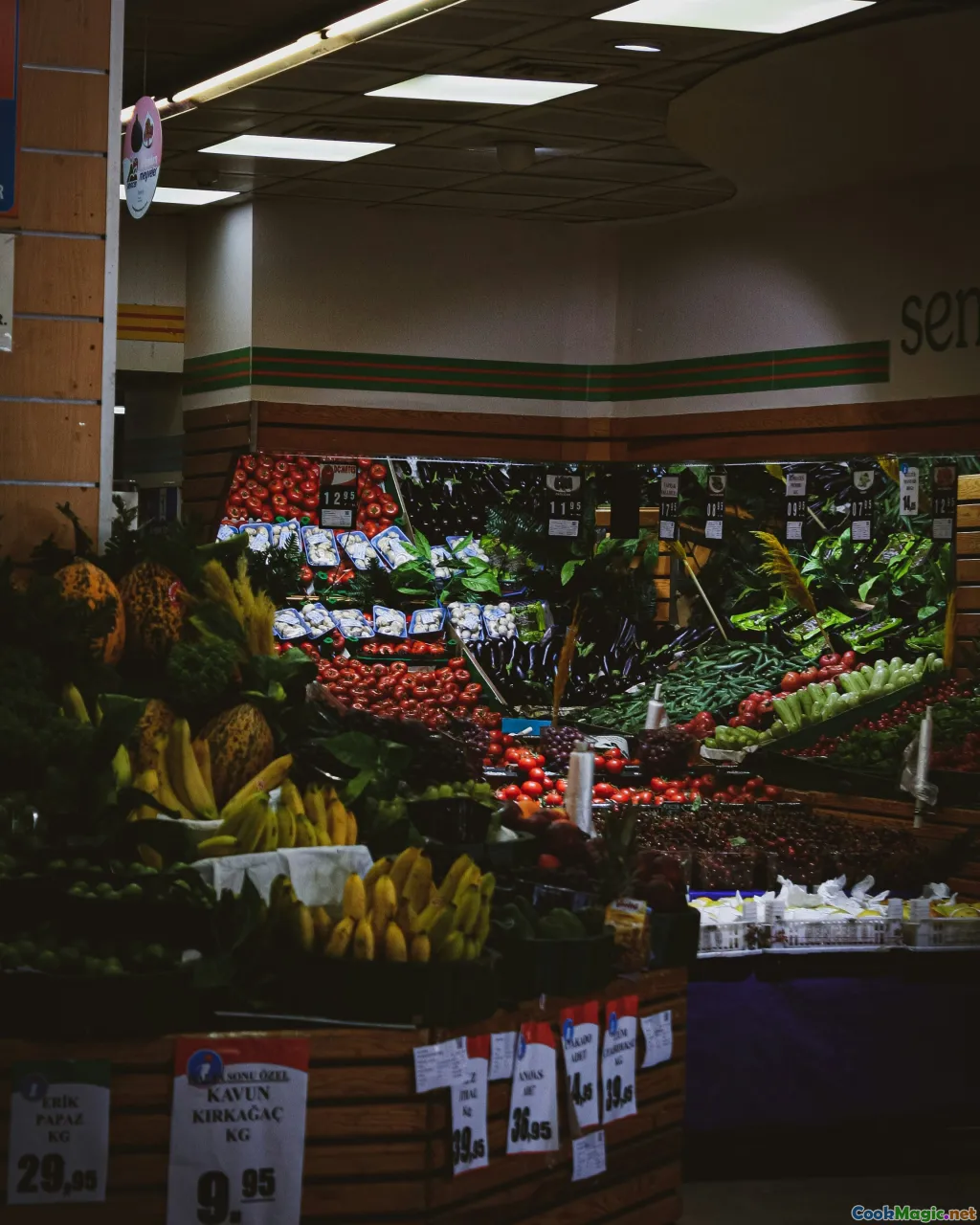
- Batata palha: Look for Brazilian or Portuguese markets, or Latin American sections in large international grocers. Online, search for “batata palha” specifically. If unavailable, you can sub very thin store-bought potato sticks, but they’re rarely as crisp and delicate.
- Crème de leite: In the dairy aisle of Latin groceries, often canned or boxed. Unsweetened table cream in the US or heavy cream works in a pinch. Greek yogurt gives tang with similar texture.
- Biquinho peppers: Jarred, mild, teardrop-shaped pickled peppers—found in Brazilian shops. Peppadews are a distant cousin if you need a stand-in.
- Requeijão cremoso: A spreadable cheese beloved in Minas. If unavailable, mix equal parts cream cheese and a splash of milk to mimic the texture.
- Cachaça for caipirinhas: Seek bottles from Minas Gerais (Salinas region) for a grassy, clean profile. Any reputable brand meant for mixing will do; avoid heavily aged styles for the classic drink.
Everything else—chicken, carrots, peppers, celery, apples, herbs—should be sparkling-fresh and easy to source. If a pepper looks dull, choose another color; the salad is a celebration of crispness and glow.
Texture Science: Why This Salad Feels So Good

A great salpicão is about contrast and cohesion. Think of it as a series of engineered encounters in your mouth.
- Emulsion: Mayonnaise is an emulsion of oil and water stabilized by egg lecithin; when you fold in dairy and citrus, you risk breaking it. Dijon mustard adds additional emulsifiers; whisking aerates it, giving the dressing that languid body. This matters because a well-emulsified dressing clings to chicken and veg, instead of pooling at the bottom.
- Water management: Salt pulls moisture from vegetables. Dress the salad and rest it long enough for flavors to bloom, but not so long that osmosis steals crunch. Drying produce thoroughly gives you control over how much water enters the dressing.
- Cut size: Uniform dice and thin shreds ensure each forkful has representative texture—crunch, chew, cream—rather than random spikes. Very long chicken shreds look lovely but can tangle and clump; aim for about 3–5 cm (1–2 inches).
- Temperature: Cold tightens flavors and makes the dressing feel denser. Bringing the salad out of the fridge 10 minutes before serving takes the chill off and opens aromas. The batata palha, however, should be room temperature and super dry for maximum crackle.
Master these small controls, and even a humble bowl becomes something that feels engineered to delight.
Hosting Tips: Scaling, Timing, and Setting the Vibe

- Scaling: For 25 people, double the recipe and set up two separate platters. One can stay in the fridge while the other gets demolished; rotate for freshness. Keep separate bowls of batata palha for each platter.
- Timing: Make the dressing and shred the chicken the day before. Chop vegetables the morning of, and hold them in the fridge wrapped in dry paper towels. Mix 2–3 hours before serving so everything has time to settle.
- Buffet flow: Place plates first, then breads, salad, farofa, and other sides. Drinks at the opposite end to avoid bottlenecks. If you’re serving caipirinhas, pre-batch the base (lime, sugar, cachaça) and keep in a cold pitcher; add ice as you pour.
- Music and mood: Salpicão loves company—put on a playlist that drifts from Gilberto Gil to Marisa Monte, keep cold towels or a misting bottle nearby for scorching afternoons, and hand out cloth napkins. Creamy salads and paper napkins are sworn enemies.
A Note on Leftovers (If You’re Lucky Enough to Have Them)
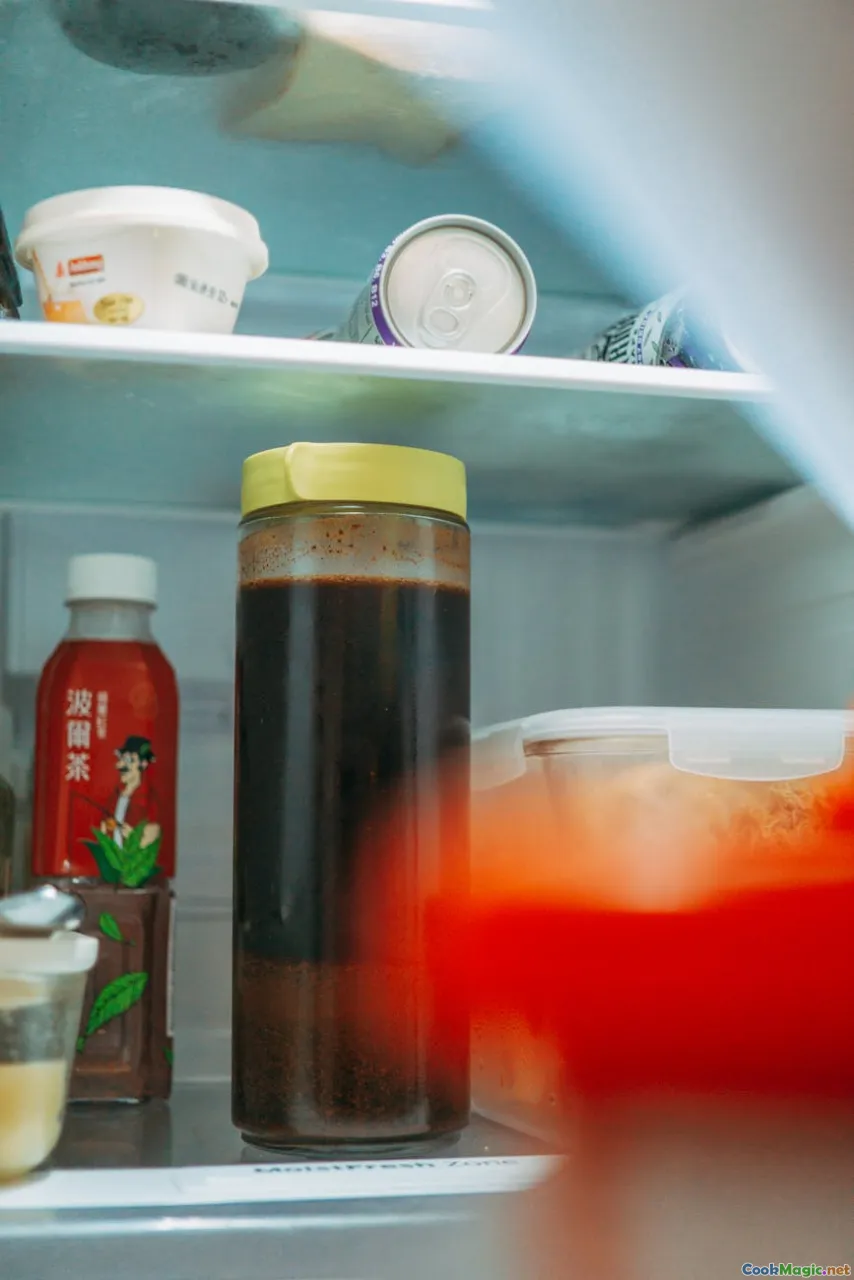
On day two, salpicão softens and becomes the world’s easiest sandwich filling. Toast thick slices of pão de forma or sourdough, swish with butter, stack lettuce leaves, and pile on the salad. Crown freshly with batata palha—always fresh—and a few drops of hot sauce if you’re feeling perfidious. I’ve even tossed a scoop with cooked, cooled penne for a whisper of pasta salad, thinning the dressing with a bit of orange juice until it slicks the noodles just so.
I also love scooping it beside grilled zucchini and eggplant for a weeknight dinner that tastes like a secret party between ordinary days. The citrus perfume returns the moment your fork cuts in, and you’re back on that São Paulo terrace, or that Belo Horizonte dining room, or wherever you first learned the pleasure of waiting to sprinkle.
When the sun leans hard and the air grows heavy, salpicão carries its own breeze. It’s an invitation to gather a little earlier, to linger a little longer, to chase July light into the evening with a forkful of crunch and cream. The first bite is the open door; the second is the laugh you didn’t know you needed; the third is the moment you realize the platter is almost gone. If you’re the one sprinkling, take a breath, listen for the delicate rain of potatoes, and call everyone to the table. It’s summer somewhere in Brazil, and there’s always room for one more spoonful.









